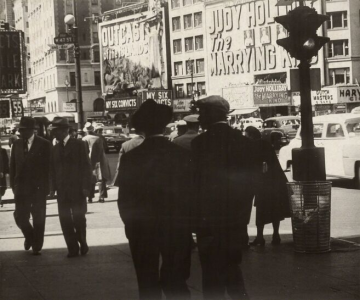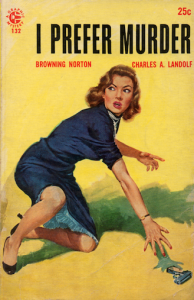Biography
Saul Levine was born in New York in 1915. He attended the Corcoran School of the Arts & Design in Washington, DC and graduated from the Yale School of Fine Arts in the mid 1930s. His teacher at Yale was Lewis York, who was a pioneer in the use of egg tempera in the United States. In addition to Levine, York's students included Reginald Marsh, Paul Cadmus, Jared French and George Tooker.
Levine's work was exhibited broadly in the 1930s and 1940s, including at the Whitney Museum of Modern Art in New York (1939), the Carnegie Institute in Pittsburgh (1940), the Art Institute of Chicago (1943), and the Pennsylvania Academy of the Fine Arts in Philadelphia (1946).
Levine received commissions for two Post Office murals. His "Ipswich Tax Resistance - 1687" was completed in 1941 for the Ipswich, MA Post Office, and his "Composite View of South Hadley" was painted in 1942 for the South Hadley, MA Post Office.
Later in the 1940s Levine did street photography. He combined his photographic and painting skills in the 1950s, continuing into the 1960s, to produce paintings for the covers of pulp magazines. He would take a series of photographs, with, for example, a model posing as a cowboy seated on a sawhorse. Levine then reworked and combined his photographs to produce a cowboy on horseback, typically rescuing a scantily-clad woman taken from another of his photographs. He used the alias "Roy Lance" for this part of his artistic career.
Levine died in Huntingdon, NY (Long Island) in 1995.



Critical Analysis
Saul Levine had a very characteristic style that placed individual or group portraits in poses that launched his subjects toward the viewer in a dramatic manner. His "Composite View of South Hadley'" for example, shows students of Mount Holyoke College on the steps of the college's Williston Library. The library entrance is faithfully rendered, but the students are more in the foreground than a realistic perspective would allow. The result is that the students almost seem to be stepping right out of the mural toward the viewer. Levine's easel paintings often present their subjects from a similarly dramatic perspective.
Levine's photography shows his fascination with people dominating the street scene behind them. His photographs from "Approximately forty New York street and subway scenes" show the silhouettes of people in a busy urban environment, looming large before the viewer. One, for example, shows the backs of some pedestrians, with theater marquees across the street displaying titles such as "The Marrying Kind" and "My Six Convicts."
That scene is almost a segue to Levine's career as a cover artist for pulp magazines. In that work the idea of thrusting some dramatic figure in the direction of the viewer is precisely what the pulps wanted to attraction the attention of newsstand browsers. And Levine delivered for them - in what must be hundreds of lurid examples. While this work may not have provided the same artistic challenge as the paintings that Levine executed early in his career, it seems likely that they were a lot of fun for him to construct - developing his silly studio shots into finished action scenes.
Murals
- Ipswich, Massachusetts - Post Office: Ipswich Tax Resistance - 1687
- South Hadley, Massachusetts - Post Office: Composite View of South Hadley
References
- Dazzling Erin, Artist Profile: Saul Levine (1915 - ????), Through the Shattered Lens August 29 (2016).
- Biography of Saul Levine (1915-1995) (Artprice).
- Galloping Broncos (Robert Deis (a.k.a. SubtropicBob)).
- A Look Behind The Covers At Saul Levine’s Model Photographs. Video with running time of 18:07.
- Milk and Eggs: The American Revival of Tempera Painting, 1930-1950 (Resource Library).
- Saul Levine (askART).